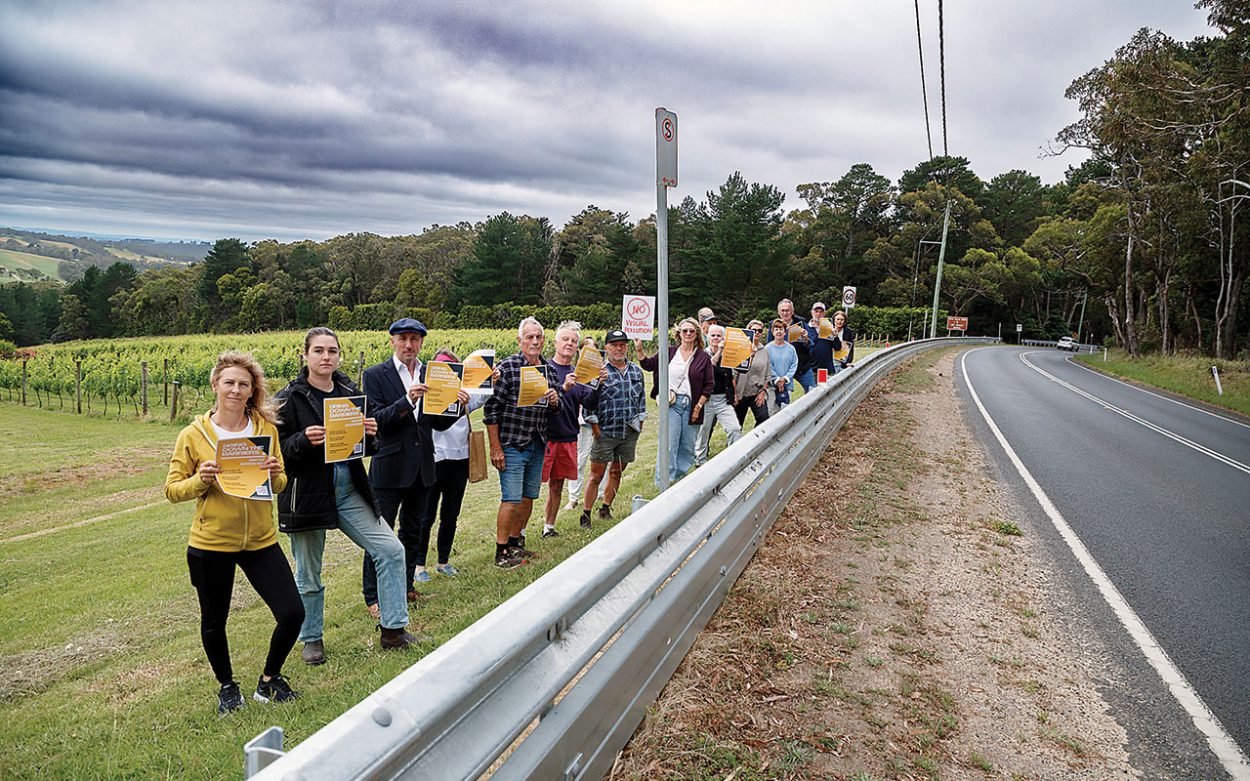A MORNINGTON Peninsula Shire plan to install roadside barriers along a scenic route in Red Hill has sparked concern from residents who argued it overlooked “far greater” road safety issues.
The shire has locked in state government funding to develop concept plans to improve motorcycle safety on Arthurs Seat Rd near Mechanics Rd, with a proposal to install a 30-metre barrier with under-rails on the eastern embankment that sits within the hinterland region. Funding for the plans has been provided under the government’s Motorcycle Safety Levy program as the council investigated “possible solutions to reduce risk” at this site. However, the shire confirmed “no grant funding has been approved for any treatments and community consultation will occur shortly, prior to any decision being made”.
The proposal comes after a 2000-strong petition from locals was lodged with council last December calling for the removal of barriers and signage in front of Eldridge Estate along Arthurs Seat Rd which they believed had compromised the green wedge landscape and the unique character of Red Hill.
The barriers and signage, installed last September and October, were funded through the federal government’s Black Spot program with the speed limit also dropped to 60kmh, but according to a community campaign group Bring Down the Barriers, the measure was “totally disproportionate” to actual crash data. They also said the “application falsely claimed that community consultation had taken place”.
The group now fears more signage could be on the way on Arthurs Seat Rd if the shire secures final approval for the proposed project under the Motorcycle Safety Levy program. “The continued installations are very disheartening,” Kerry Watson, the Red Hill Community Association’s president and lead of the Bring Down the Barriers group, said. Watson argued it would only add to the “visual pollution” of existing signs in designated scenic corridors, as well as “destroying the scenic value of the hinterland area”. “We don’t need barriers everywhere on our roads just because they happen to be wavy or just because we happen to have trees.”
Red Hill fire brigade Captain Sam Norris also opposed the installations, noting the barriers and signs were “unjustified and don’t reflect CFA road data or local risk areas”. Watson and Norris also pointed to the Whitehill Rd and Arthurs Seat Rd intersection which was “a far greater safety concern”. “If they want to make our roads safer, they should prioritise fixing dangerous intersections where accidents happen. Safety is not about who has jurisdiction of certain roads,” Norris said.
The shire said it was aware of serious crashes having occurred at the Whitehill Rd-Arthurs Seat Rd intersection, which is owned by the Transport and Planning Department. “We have advocated to officers at the department for consideration of improving the safety but don’t have any updates at this point in time,” the shire said. The Transport and Planning Department has been contacted for comment.
Watson also expressed frustration that the community was unable to have its say on a list of proposed road safety projects in the Main Ridge area that the shire has lodged through the federal government’s 2025/26 Black Spot funded program. This included safety improvements at Baldrys Rd between Browns Rd and Mornington Flinders Rd, as well as at the intersection of Tucks Rd and Shands Rd.
In a statement, the shire confirmed consultation wasn’t undertaken on the 25/26 Black Spot projects, which had been chosen “based on crash data and risk”. “Traditionally for Black Spot projects consultation hasn’t been undertaken prior to submitting them for grant funding because they are data driven applications, based on crash data and risk. Consultation has instead been undertaken on projects that have received grant funding,” the statement read. “We have however changed this approach for the 26/27 FY Black Spot applications (with a June 30 deadline) and will be consulting with the community before the grant applications are submitted.”
Waston said “good community consultation occurs before decisions are made,” noting the shire’s response had been “solely focused on proactive safety measures, rather than commonsense”. “They have failed to find a balance between road safety and preserving the rural character and economic value of tourism on a road designated as a scenic corridor in their own peninsula planning scheme document,” she said. “The Bring Down the Barriers group remains committed to pushing for change and ensuring genuine community input into future road planning.”
First published in the Mornington News – 25 February 2025



